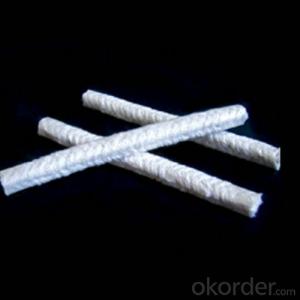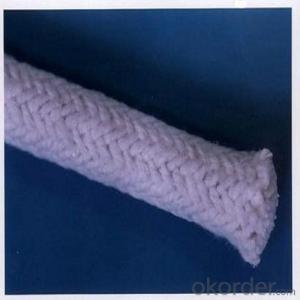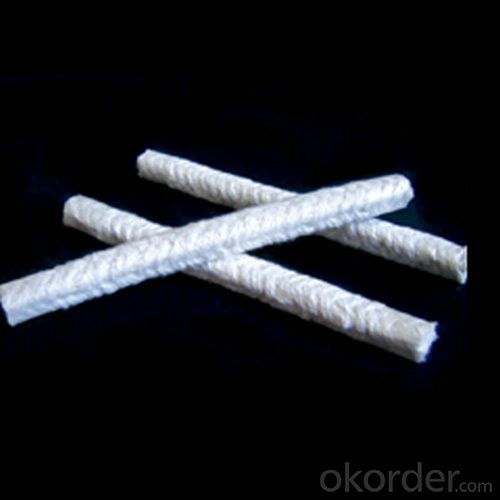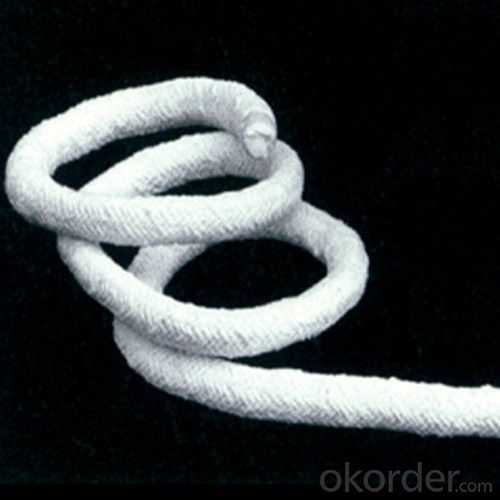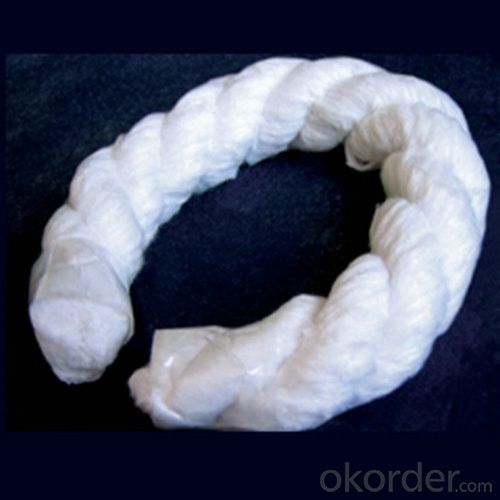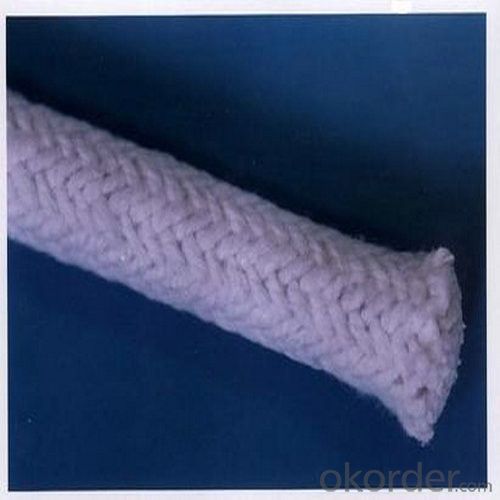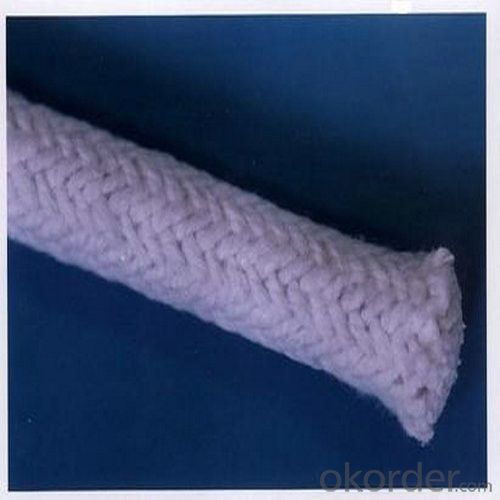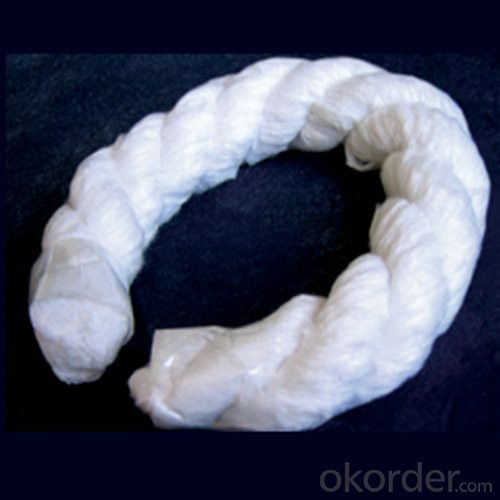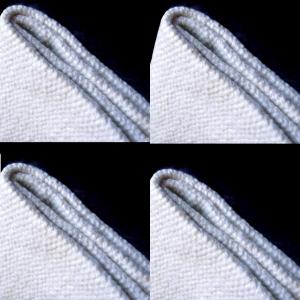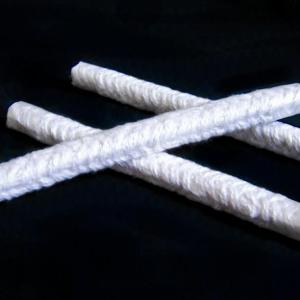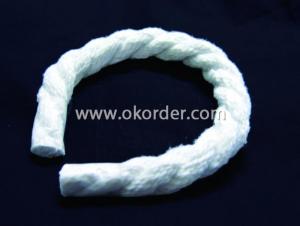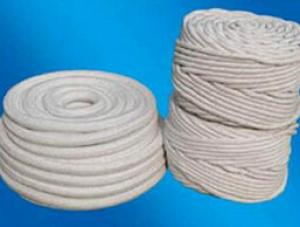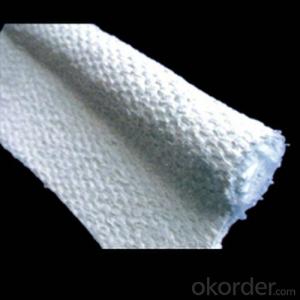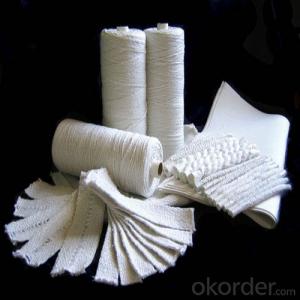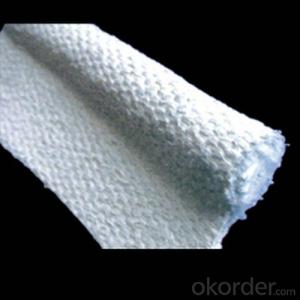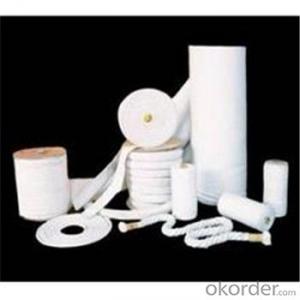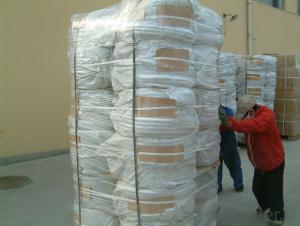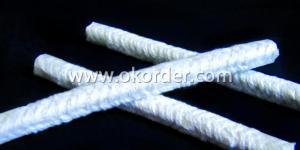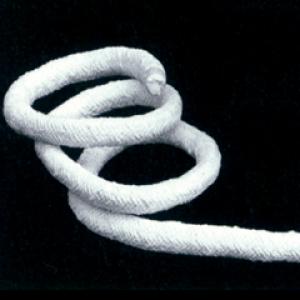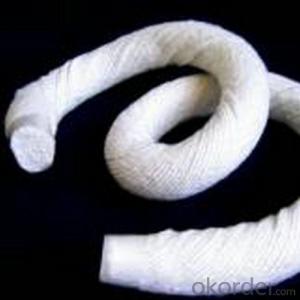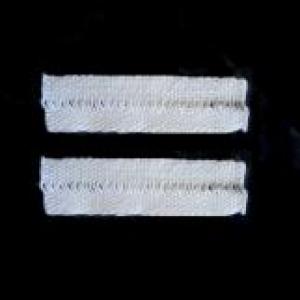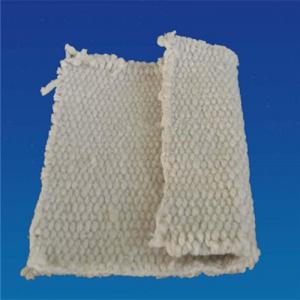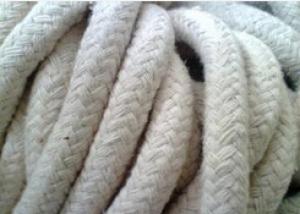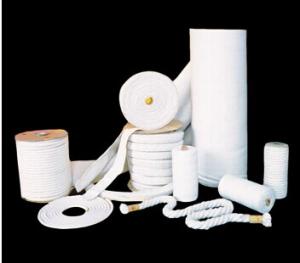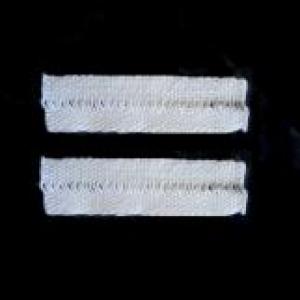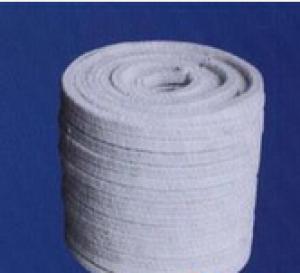Ceramic Fiber Textiles - Round Braided Ceramic Fiber Rope in Woven Bag
- Loading Port:
- Qingdao
- Payment Terms:
- TT or LC
- Min Order Qty:
- 100 kg
- Supply Capability:
- 200000 kg/month
OKorder Service Pledge
OKorder Financial Service
You Might Also Like
Specification
General Information of Round Braided Ceramic Fiber Rope
Round Braided Ceramic Fiber Rope is dense, resilient, high performance ceramic fiber material fabricated from E-glass or stainless steel wire 304 or 310 inserted ceramic fiber yarn which is braided around a core of ceramic fiber cord to form a packing in round section.
Diameter: 4mm-100mm (4/25”-4”)
Feature Of Round Braided Ceramic Fiber Rope
1. Excellent high temperature stability
2. Excellent tensile strength
3. Excellent thermal electrical insulation
4. Excellent chemical stability resistance
5. Low thermal conductivity.
Image of Round Braided Ceramic Fiber Rope
Classification | 1.Ceramic fiber round rope 5-100mm 2.Ceramic fiber square rope 5*5-80*80mm 3.Ceramic fiber twisted rope 10-80mm |
Reinforcement | 1.Glass filament 2.stainless steel wire |
Technical data | |
Al2O3 | ≥45% |
SiO2 | ≥46% |
Fiber diameter (microns) | 2-5 |
Ignition loss(%) | 18 ± 3 |
Continuous Working Temperature (℃) | 1.650(Glass filament) 2.1050(stainless steel wire) |
Thermal Shrinkage(%) | <4%(1150℃9hours) |
Thermal conductivity(%) | <0.20 (800℃) |
Bulk density(kg/m3) | 350 - 620 |
Technical Data of Round Braided Ceramic Fiber Rope
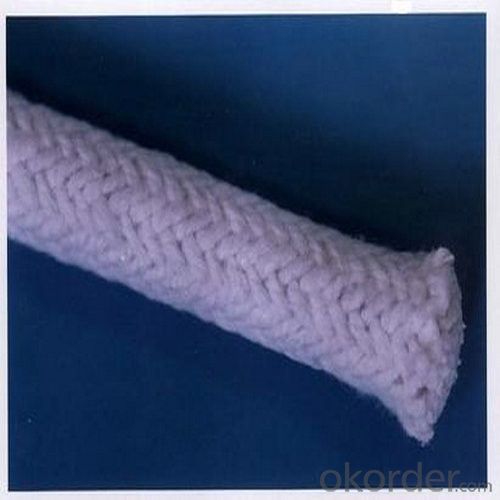
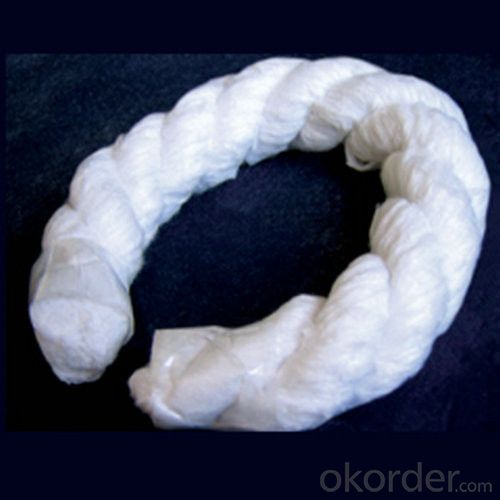
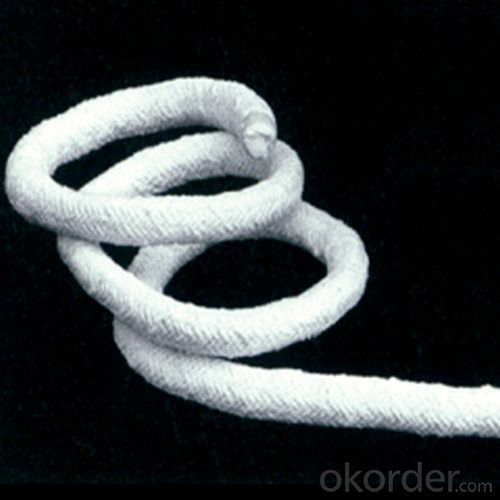
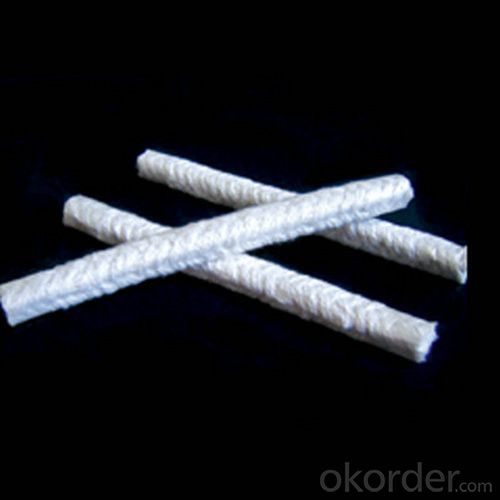
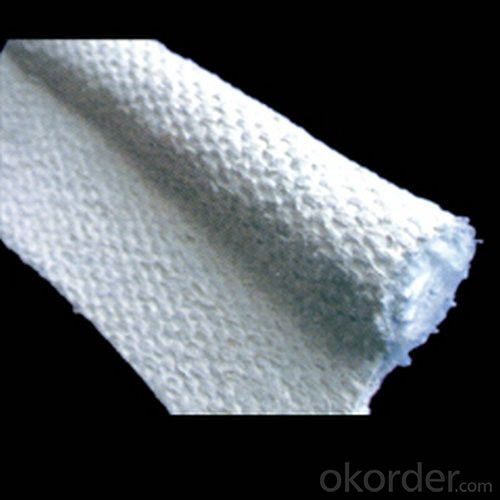
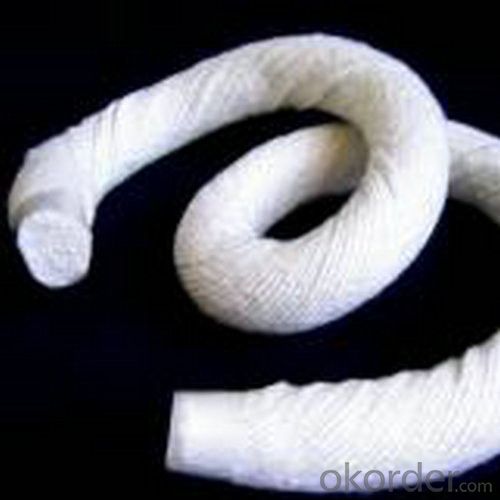
FAQ
Q1: How do you control the products quality?
A1: With strict quality control system throughout the materials selection and production process, our refractory and ceramic fiber products quality is effectively controlled to meet customer requirements.
From the raw materials selecting, our quality control begin. The quality certificates of raw materials are required and each batch will be tested before using. During production, the quality control is conducted by workers and then each piece will be sorted and examined by quality supervisors.
Q2: What`s the lead time for my order?
A2: It depends on customers’ requirements and our production schedule. And usually we need 30-60 days for refractory bricks, 10-25 days for unshaped refractory materials and 10-20 days for ceramic fiber blankets.
Q3: Can you offer Door-to-Door delivery?
A3: Yes, but only for some countries such as U.S., UAE, Saudi Arabia, Iran, and Russia, etc.
Q4: What is the minimum quantity?
A4: There is no minimum order quantity. Depending on the item and processing, there may be a minimum production required, however we can offer a quotation based only on the quantity you need.
Q5: Can you give me a brief introduction of the application of your products?
A5: CNBM (China National Building Material) core refractory business comprises the production, sale and installation of high-grade refractory products, the development and implementation of customized system solutions as well as rendering outstanding services for the key industries in Glass, Iron& Steel, Petrochemical, Cement, Ceramic and Nonferrous Metals.
- Q: Is aluminum silicate fiber completely insulated from heat transfer?
- Fire-resistant insulation layer is used to make ceramic fiber module insulation, thermal insulation thickness of four hundred mm, the ceramic fiber blanket double extrusion, ceramic fiber module in parallel sorting, the trolley furnace wall temperature to plate temperature rise of forty-five degrees, which is almost a best isolation effect.
- Q: What is the function of (ceramic) ceramic powder?
- According to different porcelain stent materials are divided into: metal porcelain powder, pure titanium porcelain powder, casting porcelain powder, two alumina porcelain powder, zirconia porcelain powder, etc.. According to the temperature is divided into: high temperature porcelain powder, medium temperature porcelain powder, low temperature porcelain powder.
- Q: Is everybody's ceramic fiber cloth poisonous?
- Aluminum silicate fiber textiles can replace asbestos textiles, widely used in metallurgy, chemical industry, ceramics. Glass, refractories, shipbuilding, aerospace, automotive, machinery, electronics, building materials, light industry and other industrial sectors of the fire-resistant, heat insulation, fire prevention, friction, sealing, silencing, labor protection, high temperature filtering etc..
- Q: What are the uses of ceramic fiber blankets?
- Ceramic fiber blanket is mainly used for high temperature, tough, self bearing high strength of the place, but also used for high airflow speed, mechanical destruction of large places. Ceramic fiber blanket can be used in these occasions.
- Q: What's the temperature of the high temperature ceramic fiber cloth and ceramic drill cloth?
- High temperature ceramic fiber cloth is made of ceramic fiber cotton, E-glass filament, high temperature resistant stainless steel alloy wire with a special process, high strength, good flexibility, high machinability, not only has high temperature heat insulation performance, has the flexibility of common textiles.
- Q: What are the differences between digital textile printing ink and printing ink?
- 1. heat transfer ink:Transfer printing for polyester, nylon and spandex fabrics;2. active ink:Suitable for direct spray onto pure cotton, silk, nylon and other fabrics;
- Q: What are the man-made fibers polluting the environment?
- Fiber (Fiber): a fine, soft filament formed by certain mechanical processes (traction, stretching, shaping, etc.) of a polymer. Fiber has a large elastic modulus, small deformation, high strength, high crystallization capacity, small molecular weight, usually tens of thousands of.
- Q: The difference between ceramic fiber cloth and ceramic fiber paper
- 1. appearance. The ceramic fiber cloth has an obvious grid like appearance, and the ceramic fiber paper is very few or even mesh like.2. density. The density of ceramic fiber paper is greater than that of ceramic fiber cloth.3. thickness. Ceramic fiber paper, the thinnest can do 0.5mm, ceramic fiber paper can not do so thin, generally thin, there are also 2mm.4. stand erect. Ceramic fiber paper can be like in our life that can be placed on the A4 paper, mold, stand up. Ceramic fiber cloth is like the fabric used in our 5. lives. It's soft and doesn't stand upright.6. tear resistance. The toughness of the ceramic fiber paper is not as good as that of the ceramic fiber cloth.
- Q: Which is better, ceramic fiber or spray velvet?
- Ji'nan Huolong thermal ceramics limited liability company to help you analyze: thrown silk and spray cotton, which is better? Which process is more suitable for producing carpets? Fire dragon energy saving from the technical point of view is as follows:1, fiber diameter: rejection fiber more coarse, rejection filament fiber is generally 3.0-5.0 mu m, spinneret fiber is generally 2.0-3.0 mu m;2, the length of fiber yarn: rejection fiber longer, the rejection of silk fiber is generally 150-250mm, spinneret fiber is generally 100-200mm;3, the coefficient of thermal conductivity: spray cotton fiber is lower than that of the thrown silk;4, the tensile and flexural strength: thrown silk because fiber thicker than that of spraying cotton;
- Q: Does the component of textiles contain 70% acrylic? Does it hurt the body?
- Acrylic may sound strange, because it is a new word that has appeared on the mainland in the last two years. It was not until 2002 that the advertising industry, furniture industry and handicraft industry were gradually understood by a few. "Acrylic" is a transliteration of foreign words, English is ACRYLIC, it is a chemical material. The chemical name is called "PMMA", which belongs to propylene alcohol, commonly known as "specially treated organic glass". In the application industry, its raw materials usually appear in the form of particles, plates, pipes and so on.
Send your message to us
Ceramic Fiber Textiles - Round Braided Ceramic Fiber Rope in Woven Bag
- Loading Port:
- Qingdao
- Payment Terms:
- TT or LC
- Min Order Qty:
- 100 kg
- Supply Capability:
- 200000 kg/month
OKorder Service Pledge
OKorder Financial Service
Similar products
Hot products
Hot Searches
Related keywords
